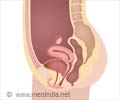Acta Biomater 2020 Jan 29
Functional supramolecular bioactivated electrospun mesh improves tissue ingrowth in experimental abdominal wall reconstruction in rats.
Mori da Cunha MGMC, Arts B, Hympanova L, Rynkevic R, Mackova K, Bosman AW, Dankers PYW, Deprest J
Development of biomaterials for hernia and pelvic organ prolapse (POP) repair is encouraged because of high local complication rates with current mate ...
Read More
Source: PubMed
Int Urogynecol J 2020 Jan 31
Impact of an informational flipchart on lifestyle advice for Nepali women with a pelvic organ prolapse: a randomized controlled trial.
Caagbay D, Raynes-Greenow C, Dangal G, Mc Geechan K, Black KI
Pelvic floor muscle training (PFMT) and lifestyle advice are effective at improving the symptoms and severity of pelvic organ prolapse (POP) in a rang ...
Read More
Source: PubMed
J Ultrasound Med 2020 Jan 31
Quantifying Levator Ani Muscle Elasticity Under Normal and Prolapse Conditions by Shear Wave Elastography: A Preliminary Study.
Tang JH, Zhong C, Wen W, Wu R, Liu Y, Du LF
The primary purpose of this study was to determine whether elasticity quantification of the levator ani muscle (LAM) using shear wave elastography (SW ...
Read More
Source: PubMed
Low Urin Tract Symptoms 2020 Jan 31
Quality of life and sexuality after bilateral sacrospinous fixation with vaginal hysterectomy for treatment of primary pelvic organ prolapse.
Yalcin Y, Demir Caltekin M, Eris Yalcin S
To investigate the quality of life (QoL) and sexuality in women affected by pelvic organ prolapse (POP) and treated by bilateral sacrospinous ligament ...
Read More
Source: PubMed
Urologiia
[Morphologic structure and immunohistochemical analysis of vaginal wall in women with pelvic organ prolapse].
Vasin RV, Filimonov VB, Mnikhovich MV, Kaprin AD, Kostin AA, Vasina IV
to study a correlation between clinical stage of pelvic organ prolapse (POP), a histological structure and results of immunohistochemical study of the ...
Read More
Source: PubMed







